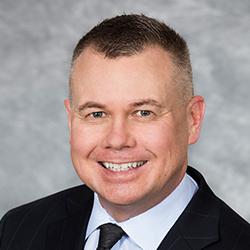Trauma research studies
- A multidisciplinary clinical approach to rib plating impacts high risk trauma patients
- Post-trauma study of a novel head protection device to reduce head injury during a fall (PRO Cap)
- Shift length and shift length preference among acute care surgeons
- Molecular profiling of innate immune response mechanisms in ventilator-associated pneumonia
Community education and injury prevention
For more information, please contact the HonorHealth Network Trauma Outreach/Injury Prevention Educator at 480-583-0670 or the HonorHealth Trauma Outreach and Prevention Specialist at 480-583-0615.
For more information on trauma research studies at HonorHealth Research Institute, please email Dr. Kepros or Dr. Haag.
A multidisciplinary clinical approach to rib plating impacts high risk trauma patients
Frank Bauer, MD, John Kepros, MD and Susan Haag, PhD
Background: Rib fractures are seen in 10% of all trauma admissions and up to 39% of patients after trauma to the chest. Rib fractures can be associated with issues such as pneumonia, pain and long-term narcotic use. Serious cases of rib fracture can be fatal. Non-operative management has been the mainstay of therapy for decades. Yet, increasing evidence supports surgical stabilization of rib fractures (SSRF) as an effective and safe intervention.
The rib fixation procedure is commonly performed by trauma or general surgeons, thoracic surgeons and orthopedists. HonorHealth Scottsdale Osborn Medical Center developed a multidisciplinary, tandem primary operative with both orthopedic and trauma surgeons. This approach allowed us to leverage available talent for maximum benefit, immediately taking on high-risk trauma cases without the need to refer patients out of our hospital.
Methods and purpose: We perform a retrospective comparison of trauma patients who underwent SSRF with nonoperatively managed controls. We examine the benefits of rib fixation in our patients by evaluating intensive care unit stay (ICU), hospital length of stay, mortality, pneumonia and need for tracheostomy.
Patient outcomes: Initial study results show decreases in patient mortality and time in the ICU.
Post-trauma study of a novel head protection device to reduce head injury during a fall (PRO Cap)
John Kepros, MD, Susan Haag, PhD and Karen Lewandowski, RN
Project summary: The purpose of this study is to evaluate the application of a head protection cap (PRO Cap) within the trauma and acute care context and to assess user experience or patient satisfaction and intent to use the PRO Cap. Trauma is the leading cause of morbidity and mortality among the elderly. Head trauma in older patients represents a challenging set of cases in patients with trauma. With an increasing elderly population in the U.S., ground level falls are quickly becoming a cause for geriatric trauma deaths, beginning immediately after the injury (30 days) through short- and long-term follow-up periods.
Fall prevention is paramount, and further patient strategies and interventions can be crucial. Yet, current strategies to prevent fall injury are minimal. Ambulation assistance devices such as canes, walkers and eventually wheelchairs can help prevent falls. We aim to examine a new strategy, the PRO Cap (a head protection cap) to help reduce injury due to a fall. The study and subsequent findings have the potential to inform medical professionals and help with patient trauma prevention. We aim to reduce the severity of a head injury due to a future fall.
Shift length and shift length preference among acute care surgeons
John Kepros, MD, Susan Haag, PhD, Karen Lewandowski, RN, FrankBauer, MD, Hirra Ali, MD, Helen Markowski, MD, Donald Green, MD, Kaveh Najafi, DO and T. Sheppard
Background: Work hour restrictions have been imposed by the Accreditation Council for Graduate Medical Education since 2003 for medical trainees. Many acute care surgeons currently work longer shifts, but their preferred shift length is not known.
Methods and purpose: The purpose of this study was to characterize the distribution of the current shift length among trauma and acute care surgeons and to identify the surgeons’ preference for shift length. Data collection included a questionnaire with a national administration. Frequencies and percentages are reported for categorical variables and medians and means with SDs are reported for continuous variables. A chi-square test of independence was performed to examine the relation between call shift choice and trauma center level (level 1 and level II), age and gender.
Results: Data from 301 surgeons in 42 states included high-level trauma centers. Currently, only 23.3% of acute care surgeons work a 12-hour shift, although 72% prefer the shorter shift. The preference for shorter shifts was statistically significant. There was no significant difference between call shift length preference and trauma center level, age or gender. These findings have the potential to substantially impact staffing models.
Molecular profiling of innate immune response mechanisms in ventilator-associated pneumonia
Khyatiben V Pathak 1 , Marissa I McGilvrey 1 , Charles K Hu 2 , Krystine Garcia-Mansfield 1 , Karen Lewandoski 3 , Zahra Eftekhari 4 , Yate-Ching Yuan 5 , Frederic Zenhausern 6 , Emmanuel Menashi 2 , Patrick Pirrotte 7
Overview: The HonorHealth Research Institute and Trauma Osborn Investigators collaborate with other institutes to improve care and outcomes for critically injured patients. One example involves early detection of pneumonia linked to the use of a ventilator. The Institute was a key participant of a study published in October 2020 suggesting that the non-invasive approach of using respiratory secretions suctioned from patients’ lungs using the already inserted intubation tube may be a better way to diagnose ventilator-associated pneumonia than the current method. Advances in healthcare move great care forward. Clinical trials ensure that innovative treatments are tried and tested, to make them available to patients.


